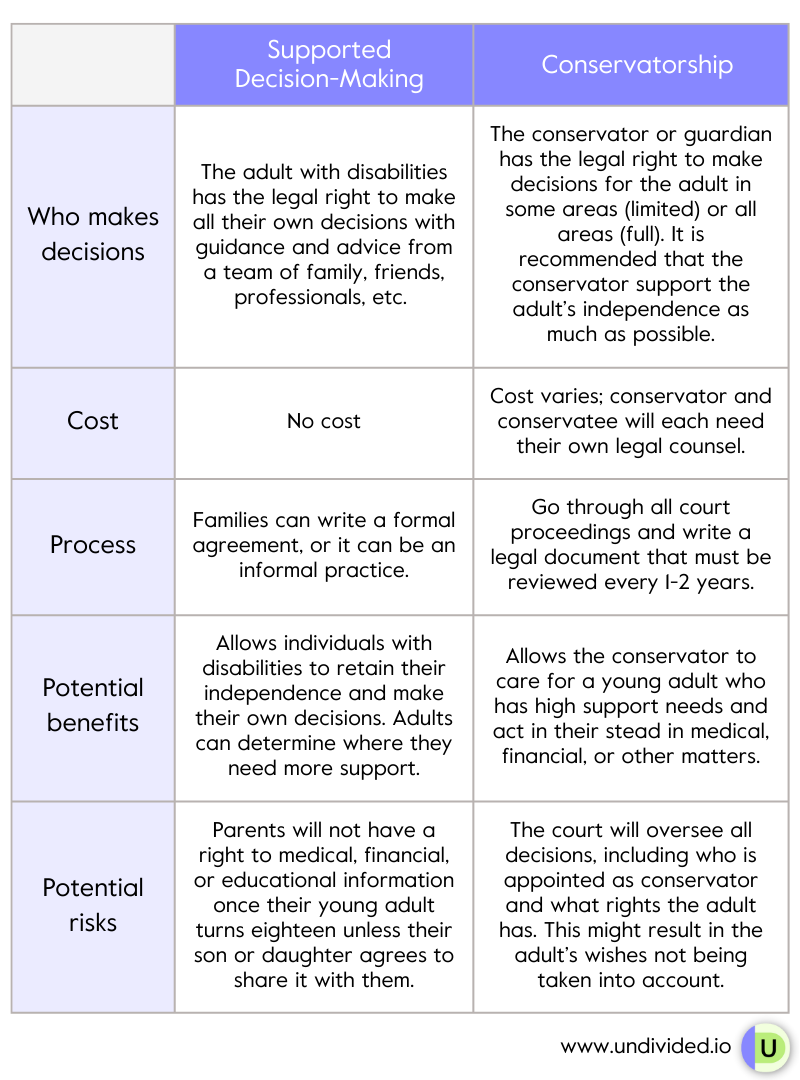How is supported decision making different from a conservatorship?
In practice, supported decision making (SDM) is a plan for your child to make decisions themselves. That practice can (and should) be part of a limited conservatorship or can be practiced without a conservatorship and supplemented by a durable power of attorney and similar documents to keep the supports included in decision making.
To practice SDM, the family should work with their young adult to create a plan, including who their circle of supports should be. Maybe the young adult's parents are involved in most decisions, but there may be some such as relationships that the young adult would rather seek an older sibling or uncle’s advice on.
There is a sample plan in the DVU handbook.
Ideally, we should be working on decision making throughout the teenage years and developing the plan over time.
Education Advocate Karen Ford Cull says, "My son understands that if he is asked to sign something, he needs to seek out support. That in itself is step #1. For example , if he is signing something, we want him to say, 'Hold up, I want to ask my dad.' And that’s written into a plan. So then if we are at a hospital and they say he’s not able to make the decision himself, we can show them our plan, and how we discuss each decision, break it down and explain it in plain language with visuals, and decide if it’s a good thing to sign or not. Only then does he sign. He can still disagree with us. It’s not a form of control. (You need a conservatorship for that.)"
Some people compare supported decision making to conservatorship, and they aren’t really two opposites in the same category. Conservatorship is a legal status with rights and responsibilities. SDM is a practice. There are lots of different ways to do it.
For more information, see our articles Supported Decision-Making 101 and Conservatorships (Limited and Full) in California.
Join for free
Save your favorite resources and access a custom Roadmap.
Get Started


